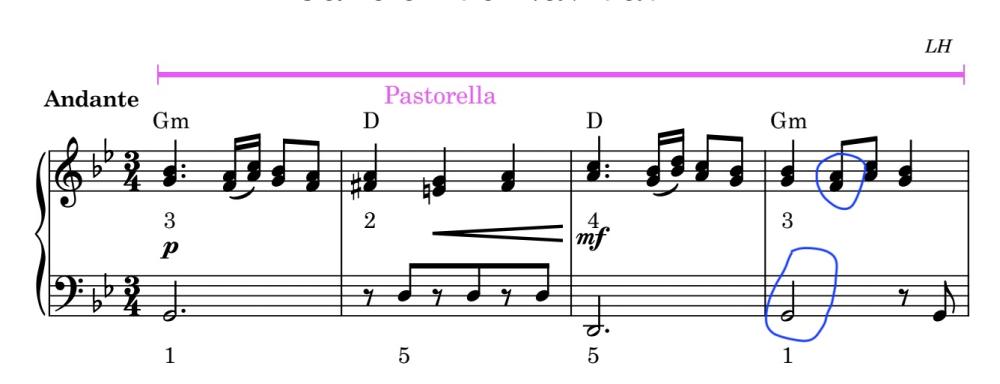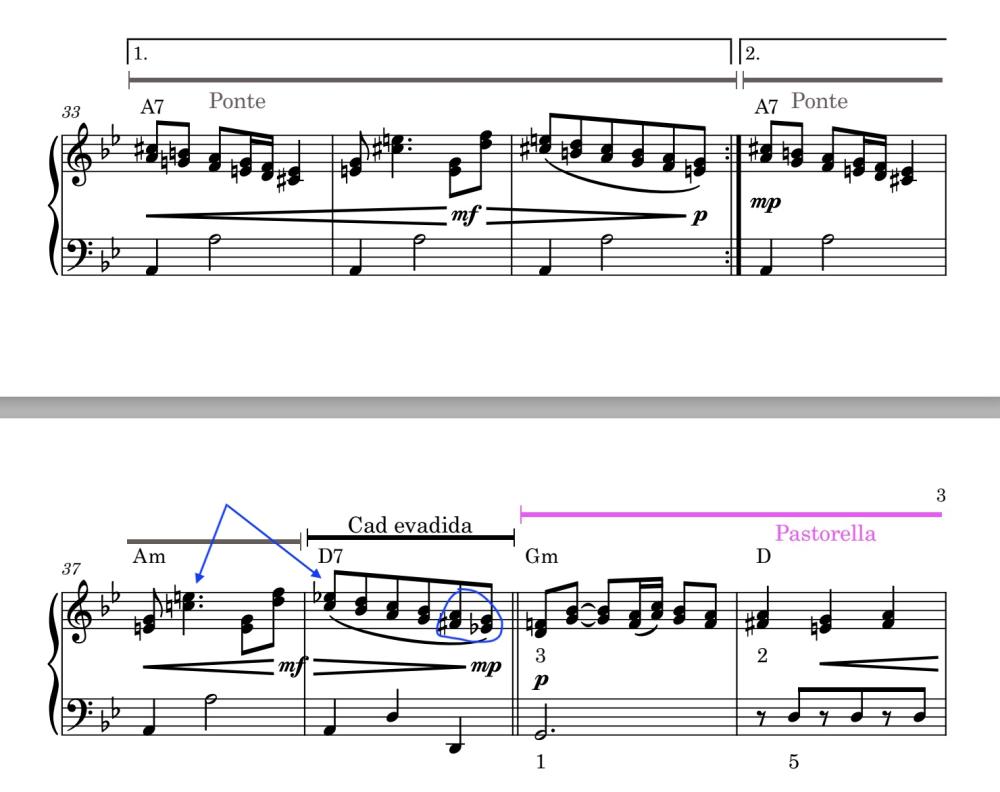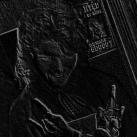Leaderboard
Popular Content
Showing content with the highest reputation on 12/19/2022 in all areas
-
This was my entry for the National Young Composers Challenge. I did not end up winning, but the judges enjoyed it, particularly the introduction. I will definitely be participating again for next year. This was also my first test of the new MuseSounds, and I am very excited about it. I was quite impressed with the realism of it, though I don't really like the trumpet all that much, as the dynamics are inconsistent. Feedback is definitely appreciated, especially since I am planning on expanding the material into a full symphony.1 point
-
Hello!! I wrote a ballroom waltz titled "The Color of Your Eyes" inspired by none other than: her brown eyes lol. You can never go wrong with a cheerful waltz for any occasion right? 🙂 Let me know what you think and I hope you like it! Video: https://youtu.be/ieZsZ04Rks0 Score: https://drive.google.com/file/d/1Yef2wzSqjKo38y8tS92QPGPCAHKVzrHb/view1 point
-
Wow, the first part is convincingly dramatic. The transition into the furioso part is perfect, and in this part, the entries of the basses are wonderful. Nice contrast that makes the adagio and the resurgence afterwords. I'd like to remark the melody. Great work.1 point
-
Hello! My piece composed November 2021-February 2022 that was premiered June 2022 has finally gotten a recording my way! I am so happy to be able to share this work with you! Some context below, but I would love to hear your thoughts (and if you have commented on this when I shared it earlier this year, what new thoughts do you have with the live performance?). Written for the Heartland Marimba's 2021 Keyboard Percussion Composer Lab Festival, "Toy Box Suite" was premiered alongside several other composers' works at Studio Z in Saint Paul, Minnesota. It was composed between November 2021 and February 2022. The festival, led by percussionist Matthew Coley and composer Jenni Brandon, had seminars which dived deep into the nuances and techniques of the keyboard percussion instruments (like marimba, vibraphone, xylophone, etc.). Evan Erickson's "Toy Box Suite" was written to invoke a sense of nostalgia and sound like music that would come from a children's toy box. It is playful, imaginative, and has lots of groove that any audience is sure to find something they enjoy.1 point
-
That's interesting. I'm sure the F# would work fine here, surely it would sound more "round", more what our "tonal" ears would expect. However, the combination of natural minor and harmonic (or melodic) minor is often seen in the baroque period. The raised 7 was reserved for the dominant or when the scale is ascending. Besides, an F# would clash with the G in the base, mor than the F natural. Another point of "trouble" was this: coming from Dm (as tonality) and going to Gm, when should the E natural be changed to E flat? This is a solution, but not the only one. Also, the leap from F# to Eb is not "the rule" (mayor second), but it can be used.1 point
-
LOL! There's no way my last name will be named though as it's so hard to pronounce! I search through Wikipedia and it says: The Meyer features four events presented in pairs of two. The melody features a first descent from scale degree 1 to scale degree 7 in the first pair of events, and then a second descent from scale degree 4 to scale degree 3 in the second pair. The bassline features a stepwise ascent from scale degree 1 to scale degree 2 in the first pair and another stepwise ascent from scale degree 7 to scale degree 1 in the second pair of events. This establishes a tonic function to dominant function "opening" of the harmonic progression in the first pair of events, and then a dominant function to tonic function "closing" of the phrase in the second pair. So I guess the "Meyer" concerns both melodic and harmonic content. As long as the top is 1-7, 4-3 and bass 1-2,7-1, and fulfill the tonic-dominant, dominant-tonic function will be ok? Even though in the third chord here the bass is not a 7, which F#, but D here, I guess it's fine? Henry1 point
-
First of all, clicked because of the cat. You got me. Wonderful music as always, Luis. So what's the "Meyer" progression? I can't quite read the symbol next to F#m..I'm assuming a 6 for first inversion maybe? So it's i-#vii6-V7-i ? I only ask because it's my last name, so I feel like I should know it lol Thanks for sharing!1 point
-
Wow, this is really beautiful music. A couple quick notes before I get into it: -make sure the double basses have a C extension for measure 5 -I liked the sustained flute notes in the introduction. What if you had continuous lines for them and they alternated when to breathe? -Pizz notes were very hard to hear starting at bar 66, but that could be because of the transition to the better samples -I would have tried to do something a bit different than having all the low string playing triplets, but eh that's just me and a preference thing Now, onto the music. I absolutely LOVE the harmony you create. There were several moments the chords fell onto a diminished chord, or the subtle rising chromatic parts, that really pulled my heart strings. I normally listen to a piece several times while commenting, but found myself wanting to hear this one again and again because I like it so much. Yeah, the middle fast section seemed a bit abrupt, but it was really cool. It sounds like you were under a time constraint? Regardless, if your plan is to expand this one into a larger symphonic work, I would for sure elongate that entire section. You have plenty of material to craft really cool motifs from the string lines, just give them a bit of rhythm and a cadence so you can really toy around with it. If it were me, I'd keep the first introduction section as is (really great English horn stuff there), and develop the crap out of the middle section. Maybe make that your main theme, or possibly even get two themes out of it for a sonata-allegro form. Dunno, the gears were turning listening to this piece. You could even have your return to the slower adagio material be a brief interlude before going back to some faster moments for a recapitulation. Ooh, ooh, what if you made the English horn as a feature for the introduction and slower return, really highlighting how beautiful the solo lines you gave it are? (I just really like the instrument 😄) Another idea I had would be an extended use of the percussion. I know you're going for the classical orchestra type of vibe, but the timpani was a part where I thought you could explore more as you develop this piece. Even giving it rhythms and ostinatos during the fast section would be cool. It's just too much I hear it used as if Beethoven were using it. But a LOT of rhythmic exploration and development has happened since his time, I think it would be cool if you explored some of it's possibilities. Some of Shostakovich's music comes to mind as I type this, kind of a classical yet modern take on it (at least for his day, who knows what you could come up with!) Obviously this all depends on what you're going for, these were just some thoughts that came to mind as I listened. I really like all the slower romantic sections, some of the solo melodies you created were wonderful, and your use of harmony was very touching. Keep us all updated on how this one turns out, I'm eager to hear it 🙂1 point
-
Hi again Luis, I happened to listen to this xmas song a minute after it came in your channel or so, lol. As always, this is a good and solid composition but what it lately is fascinating me is your use of schematas and how didactic your video gets just by putting each one over the staff line. Really good content if you ask me, you deserve more subs. Looking forward to check and listen some more of these schemata-based pieces. Kind regards, Daniel–Ømicrón.1 point
-
I am happy too! Look like my listening skill is ok😝! That's just my preference but I find that passage not slow enough for a flute to be playing static notes. Then that's really fine!1 point
-
That's expansion on your usage of schematas! Personally I just find the F natural in the pastorella schemata a little bit off, and I think changing that to F# doesn't change the schemata at all. But overall a great study piece. I read in your site and wiki and it's really resourceful. That Jupiter schemata is already used Josquin in his Missa Pange Lingua's christie eleison though. Henry1 point
-
No doubt the judges love the introduction. It's really spacious and full of timberal and dynamic contrast. It really reminds me the introduction of Beethoven Symphony no. 2..Even the opening chord is masterful with instruments holding longer or shorter. I absolutely love the cor anglais melody. I just think the flute lead up in b.13 can be changed to a dotted rhythm to be slightly less static. The climax is gigantic, I love the underlying tremolos and the balance is great. I find the fast section less convincing than the other two slow sections. First is the overall unbalance of the three part structure. The middle fast section is too short to create contrast and provide reason for the tonic major major transformantion of the next section. I guess it's due to time limit of the competition, so that's not a problem. Also, the melody by Violin II and viola is overwhelmed bt the trombones. I think cello, double bass, clarinet and bassoon can add in to counterbalance too, since I see the flute joins when violin I plays. The build up to that dim.7 chord is so amazing with that dactyllic rhythm! Really great job here. Section F provides good contrast and transition as well. I love the warm horn after a catastrophe. Section G is great as well. I just find the A-A sharp tone clash a little bit direct sincd they are in the same register. In b.82-83, can the cor anglais change that quickly to an oboe? I think some rests are needed for the oboist to change instrument. But the texture here is so great: melody, countermelody, accompaniment, typical symphonic sound. That running of violin in b.86 reminds me Tchaikovsky's Pathetique, and the triplets of low strings are used greatly. I absolutely love the minor seventh chord used in this section as well as the chord D-G-A-E in b.94. Nice ending as well! Overall a marvellous work! Your orchestral usage is great and I really would like you to expand this overture, especially the middle section in your later expansion. Thanks for sharing this great work here, Jonathon! Really appreciate that! Henry1 point
-
Thank you so much Daniel–Ømicrón! It means a lot that you enjoyed it and subscribed!! I'm using a website which I recently became Patreon of. Artinfuser Studio: https://artinfuser.com/artinfuser/ Thank you for the comments on both score and sound! I struggle with introductions a lot, and for me its difficult to be satisfied with one. I was with this one, and I am glad it was nice. And the endings, I love writing endings hahaha. It would be an honor if you shared it in your social media! Of course I don't mind 🙂 That made me very happy! Thank you again!!1 point







